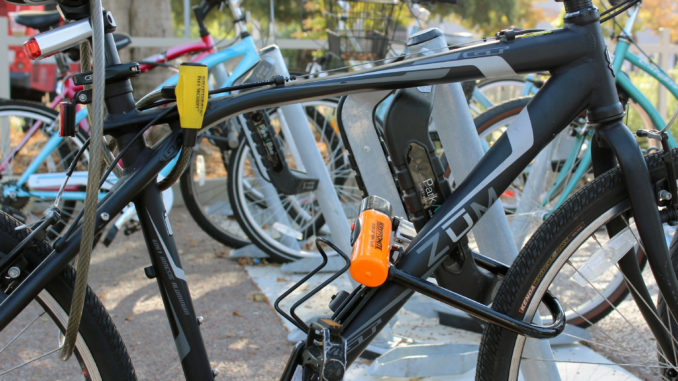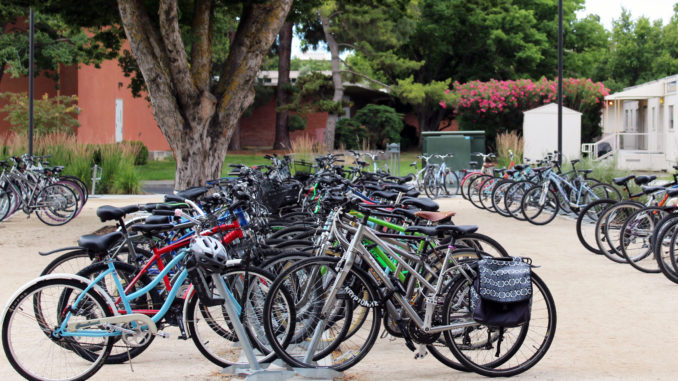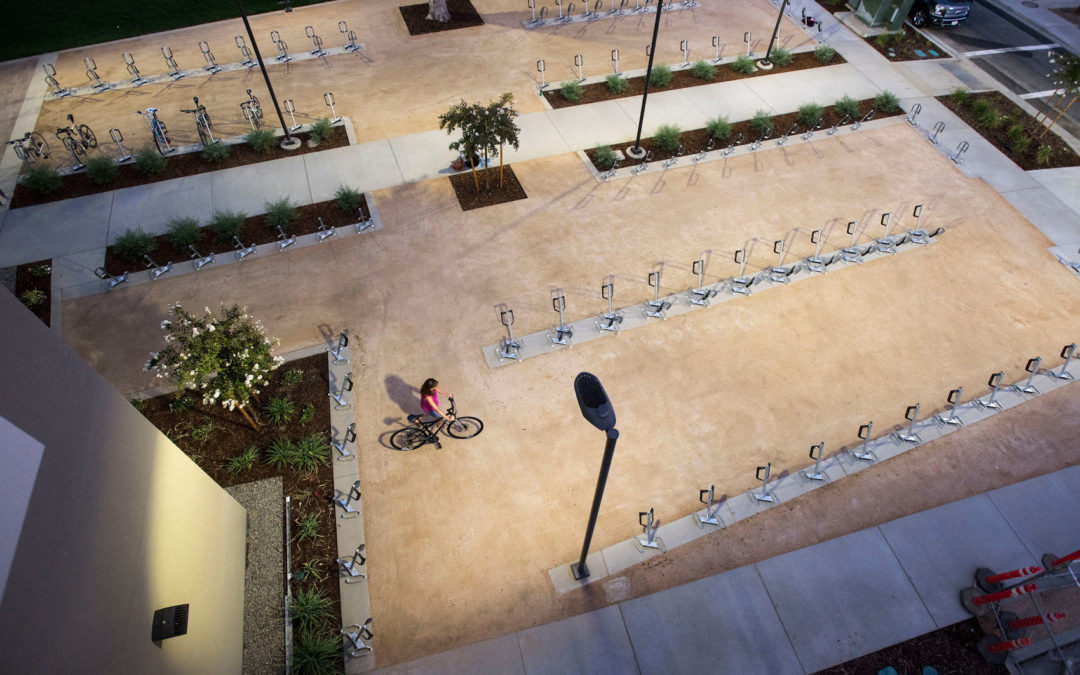Biking around campus as a college student, I would say one of the worst experiences I ever had was having my bike stolen. There is no worse feeling than coming out of three-hour class only to realize that your bike is nowhere in sight. I think what frustrated me the most was knowing that if I would have taken a few extra minutes to make sure my bike was secure and locked up the right way, I could have avoided the whole situation.
As a college student relying on your bicycle to get around, you are more than likely going to have some sort of experience with having your bike, a tire, a seat or some part of your bike stolen. According to the National Bike Registry, “a four-year student bicyclist faces a 53% (1 in 2) chance of losing their bike to theft.” That may seem unreal, but when you think about it, it makes a lot of sense. A college campus is an ideal place for a bike thief.
Bicycles are continuously growing as one of the most popular forms of transportation on college campuses. They provide more accessibility than driving, are affordable, and allow for students to get around the campus quickly. While there are many positive outcomes that come from more students riding bikes, unfortunately, there also comes a lack of knowledge. A lack of understanding that bike theft is indeed a real thing that can happen when students are not precautious. Sadly, many students have to go through the experience of having their bike stolen before they realize that bike theft can indeed happen to them. I speak from experience.
Here’s a list of five things I wish I would have done, that can hopefully help you avoid having your bike stolen on campus.
Register your bike
Without a doubt, you should register your bike. If your school’s transportation department offers some sort of registration service, take advantage of it. Registration gives your bike an identity. It’s a way for your school to keep a record of your bike, and if ever in the unfortunate event your bike is stolen, the likelihood of it being found will be much greater. It also provides proof that your bike actually belongs to you.
Be Smart With How You Park Your Bike

Making sure your bike is locked up correctly is the best way to guarantee your bike will be in the same place once you return. You can buy the best lock in the world, but it will not do anything if you are not locking your bike up the right way. It seems easy, but I, like many students have completely failed at locking my bike and had to pay the price for it.
When you lock your bike, you want to make sure that all of the elements are protected. This includes your frame and both tires. Many cyclists agree that it is always best to make sure you lock both your frame and tire to the bike rack. Locking only your frame, or tire leaves your bike vulnerable, allowing a thief to take the piece that isn’t locked.
To protect both tires, it’s also good practice to make sure that both of them are locked up. If this means investing in a second lock for just the back tire, running a cable or chain through the back tire and connecting it to your lock, or taking off your front tire so you can lock it to the frame and the other tire, I say do it.
Use a better lock
While there is no lock on the market that is guaranteed to prevent bike theft, there are some that make stealing a bike much more difficult. The type of bike lock you use may be one of the most important measures you take in preventing bike theft.My recommendation, invest in a U-lock. Initially, it may seem expensive, but spending those few extra dollars can be well worth avoiding the need to replace your bike. Cable locks really just won’t cut it. They provide very minimal protection and are quite easy for thieves to cut with just a hand tool. Some people use a chain and other forms of thicker cable locks, but I personally think a U-lock is the best way to go.
Park in “Bike Heavy” areas

Location is also a major factor to consider when protecting your bike. What you do not want to do is lock your bike in an area where a bike thief is likely to strike. A dark alley behind a lecture hall, or parked up against a tree are two examples of locations that to bike thieves, scream “take me!”
What you should do is park your bike in a “bike heavy” location. Locking your bicycle in an area where there are a lot of other parked bikes can help it to blend in, and avoid standing out to thieves. You also want to make sure that you park it in a location where there are a lot of people around. A thief is less likely to show up with a bunch of tools to cut through locks and take apart bikes when there are a lot of eyes watching.
Bring your bike inside at night

Students should also avoid leaving their bikes parked on campus overnight. This is a problem that is fairly common among students that live on campus. Bikes left outside overnight are usually the most vulnerable. In the evening, there are not as many people around, locations can be dark and dimly lit, and thieves are more likely to strike.The best thing you can do to avoid having your bike stolen at night is to bring it inside. While it may seem like a hassle, if you can, bring it into your dorm. Many schools are also working to combat bike theft by creating more indoor storage locations and bike rooms for students that live on campus. These locations are often locked, secured, and only accessible by students, making them the ideal place for overnight and longterm bike storage.
So there you have it! Five tips to help prevent bike theft on campus.
Interested in hearing more? Here’s a video of some student cyclists sharing their opinions on what can be done to combat bike theft on college campuses.



